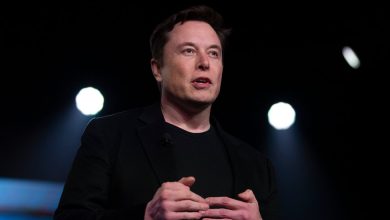Is Microsoft’s quantum leap the real deal? Experts weigh in

Quantum computers are often said to be the next frontier of computing, with the potential to transform industries ranging from healthcare to cybersecurity.
Scientists believe that quantum computers can help unlock new discoveries, and companies hope that they will make their businesses more efficient. Governments, on the other hand, worry about quantum computers being used in cyber warfare as they can potentially be weaponised to crack codes and decrypt data.
While quantum computers do exist today, they are yet to become fully practical and widely available.
Microsoft announced on February 19, that it has developed a new quantum computing chip called Majorana 1. The company considers Majorana 1 to be a breakthrough primarily because the chip has been developed by engineering particles that exist in a new state of matter.
With Majorana 1, Microsoft expects to build “quantum computers capable of solving meaningful, industrial-scale problems in years, not decades.” In an appearance on a YouTube podcast, CEO Satya Nadella put the timeline between 2027-29.
Microsoft said that Majorana 1 is powered by a unique Topological Core architecture that allows it to be potentially scaled up to a million qubits. However, the company’s claims were met with divided responses from experts.
Jay Sau, a professor of physics at the University of Maryland (UMD), US, ruled that Majorana 1 “is a significant achievement because it shows evidence for a significant level of coherence from a topological qubit.”
Story continues below this ad
But, Eli Levenson-Falk, an assistant professor of physics at the University of Southern California (USC) Dornsife College of Letters, Arts and Sciences, told indianexpress.com that “there’s a lot of unknowns” with Majorana 1.
‘Limited claims, trivial explanations’
“It’s important to note that while press releases claim a multi-qubit chip, the peer-reviewed journal article [published by Microsoft] is much more limited in its claims–they show behavior consistent with a qubit but also consistent with more trivial explanations…,” Levenson-Falk said.
“If Microsoft really does have the chip they claim, then this is indeed a breakthrough, as it would be the first demonstration of a topological qubit of any kind,” he added.
Qubits are the building blocks of quantum computers. Topological qubits are said to be more stable and resistant to errors than traditional qubits.
Story continues below this ad
Microsoft claimed that it has successfully fabricated the first topological qubits using topoconductors made of materials such as indium arsenide and aluminium.
While the company published a paper with intermediate results in science journal Nature, it does not provide conclusive proof of the existence of Majorana particles.
In the scientific paper, Microsoft researchers described conducting an experiment which showed signs of the existence of particles called Majoranas on a superconducting ‘nanowire’ device made of indium arsenide. However, the paper also reportedly states that the experiments “do not, by themselves” guarantee that the nanowire hosts Majorana particles.
“The Nature paper claims to measure fermion parity associated with Majorana, which is the starting point for a qubit. I think it’s stronger evidence for Majorana than we have had in the past because it looks at response in real time,” Sau said. “As discussed in the peer review files for the paper, it is not conclusive evidence for Majorana,” the UMD professor added.
Story continues below this ad
“Unfortunately, Microsoft has had a lot of big claims in the past that were later retracted or heavily modified, so most quantum scientists are going to wait for more concrete evidence before we believe the claims in press releases,” Levenson-Falk opined.
What happened in 2021
First theorised over 80 years ago by Italian physicist Ettore Majorana, Majorana fermions are particles that are their own anti-particles. Unlike electrons or protons, Majorana particles are not naturally occurring.
Over the past decade or so, researchers have detected signs of a kind of Majorana fermion known as a Majorana zero mode (MZM), where groups of electrons and other particles act as a single particle.
In 2018, Microsoft researchers published a paper in Nature which claimed that they have found strong evidence of the existence of Majorana particles within a special kind of superconductor. This discovery, the researchers suggested, could enable the development of a more powerful kind of quantum computer.
Story continues below this ad
However, in 2021, the Microsoft-led team of scientists retracted the paper, citing “insufficient scientific rigor,” according to a report by science publication IEEE Spectrum.
Role of Majorana particles in quantum computers
Proving the existence of Majorana particles has been extraordinarily difficult. Over the past 20 years, Microsoft researchers have taken a unique approach to quantum computing by focusing on fabricating topological qubits from Majorana zero modes.
“Apart from the synthetic analogs and use in some stabilization schemes, [Majorana particles and topological qubits] currently do not play a big role in quantum computation. Microsoft’s is the only quantum computing effort where hardware topological qubits are used,” Sau said.
Microsoft’s pursuit of topological qubits stems from a key challenge in quantum computing – reducing errors.
Story continues below this ad
“Qubits are finicky and highly susceptible to perturbations and errors that come from their environment, which cause them to fall apart and information to be lost,” Microsoft said in a blog post. In theory, topological qubits created from Majorana zero modes have extraordinary resistance to outside interference – a characteristic that might help tech companies build more practical quantum computers.
When asked about global progress in quantum computing, Levenson-Falk said, “We are just barely at the point that we have quantum computers that work better, not worse, when we increase the number of qubits. We are still many years away from applications where we know a quantum computer can make a big difference, but there are a lot of exciting possibilities in the meantime where no one is sure if quantum computing can give a practical advantage.”
“Making a million qubits is very different from making a thousand. For example, the technology I work on, superconducting circuits, needs advances in nanofabrication, microwave signal routing, and large-scale control electronics. The good news is that these are engineering challenges, not physics ones, and we’re quite confident they can be solved,” the USC professor added.
Sau, on the other hand, held that Google’s quantum computing chip ‘Willow’ announced last year is the current leader “in terms of establishing a very difficult computation though without any known application.” “There is still a long way to reduce gate error and cross talk,” he added.
Story continues below this ad
Both experts unequivocally agreed that Microsoft’s quantum computing breakthrough does not hold implications for the ongoing AI arms race or, for that matter, threatens encryption standards.
This report has been updated with responses from Jay Sau, professor of physics at University of Maryland, US.




